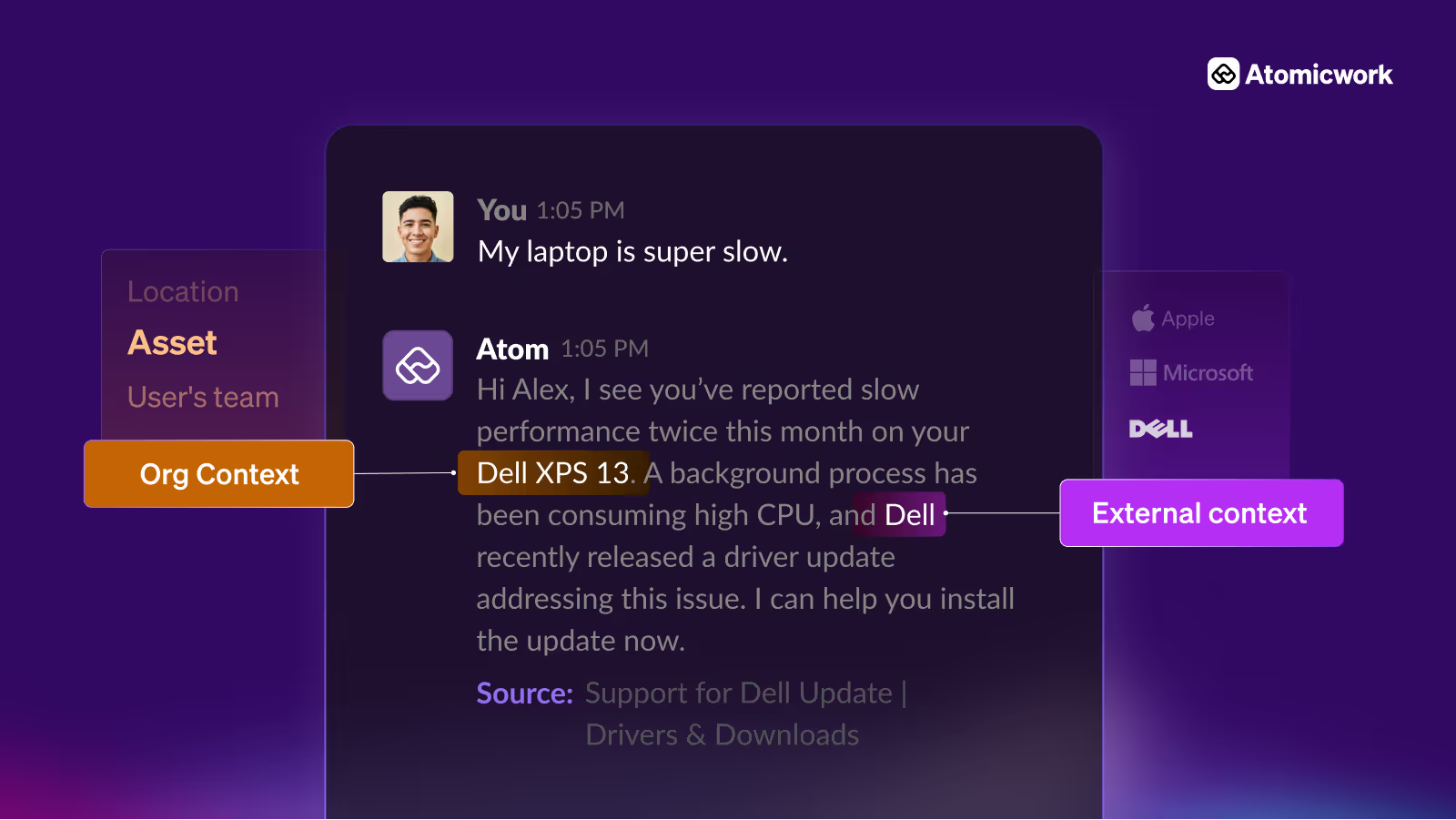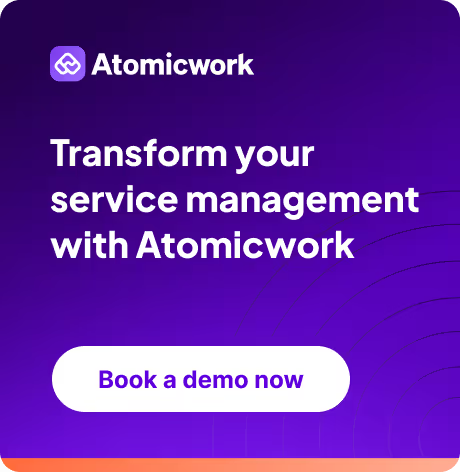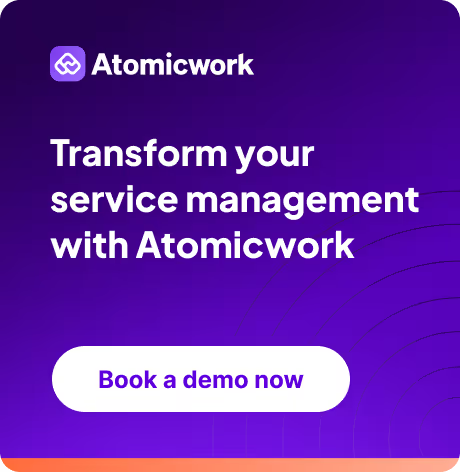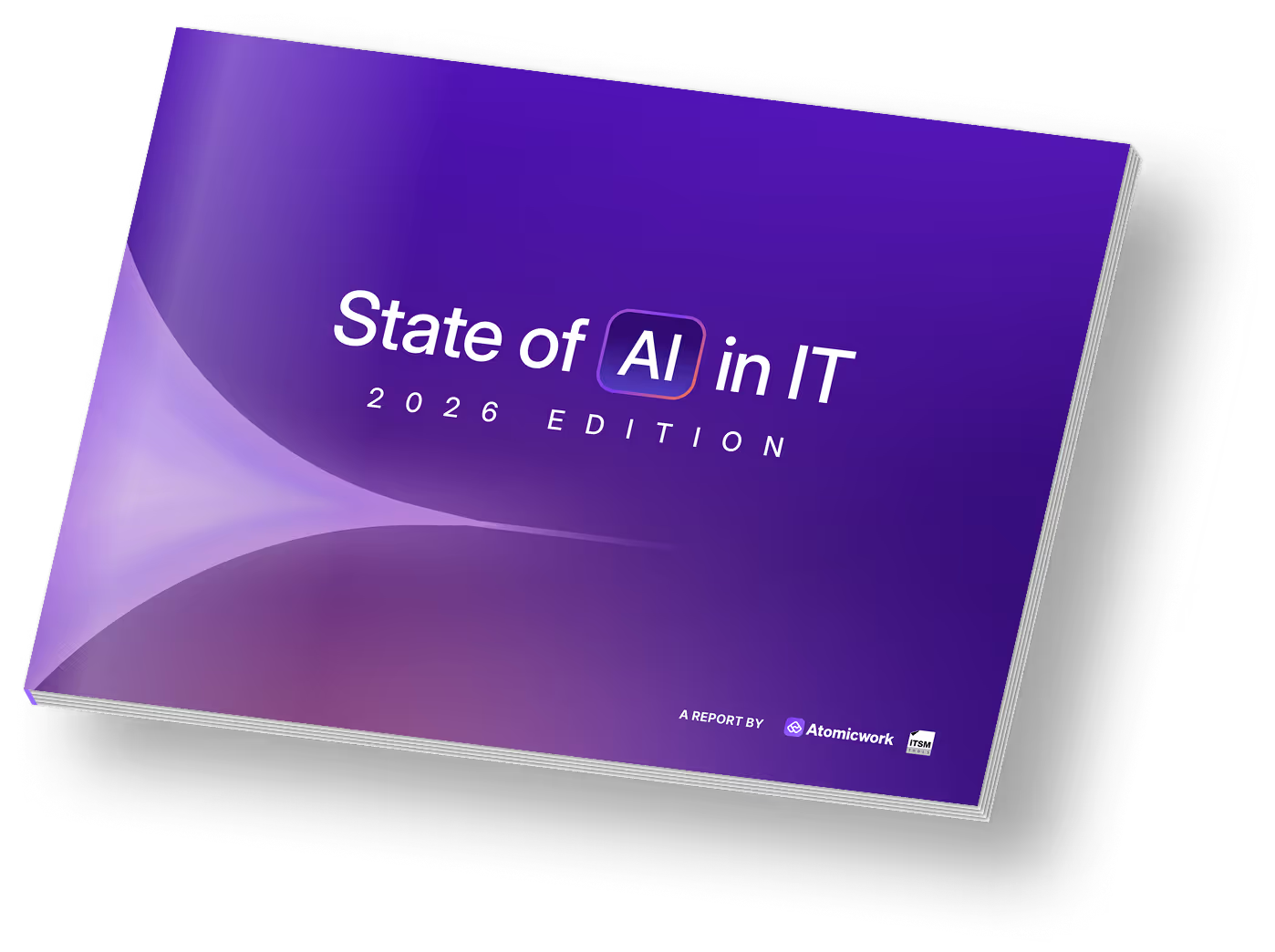It’s 2025. Why have you not hit reset on your ITSM?
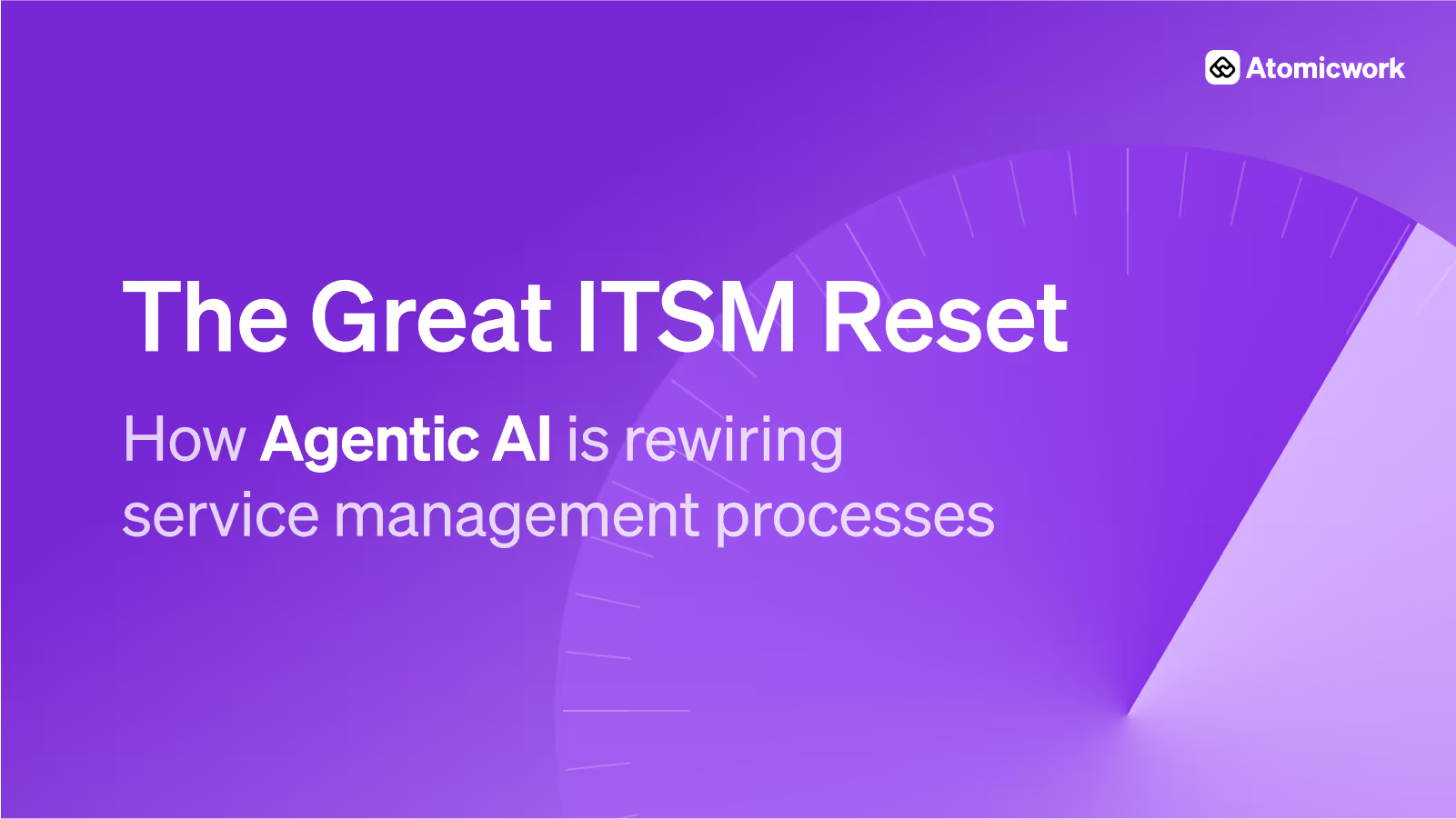
All enterprises are a combination of people and processes. These two building blocks of an organization ensure that the wheels move smoothly so that the organization can be efficient and productive.
However, while we spend a lot of time and energy in making people productive with AI, we miss out on making processes productive.
This is a truth we hear again and again after speaking with hundreds of IT leaders: even in 2025, most organizations spend more time fixing old workflows and dealing with inefficient processes.
Even core processes that need to be efficient like ESM, a digital backbone of the organization, are very inefficient. Most of this can be laid at the feet of traditional service management systems that take an old-school approach; they’re built for managing processes and are ticket-first and portal-first.
Let me break down exactly why this approach is broken:
Traditional employee support workflows are portal-centric - forcing employees to leave their flow of work, navigate to the right self-service portal, fill out forms, and wait in triage queues. They're ticket-first - turning every interaction into a formal ticket before anyone can help, creating clicks, queues, and overhead. They're configuration-heavy - requiring admins to manually configure rigid, prescriptive rules that become outdated the moment they're deployed.
Most critically, they're rule-based - deterministic workflows with predefined logic that break down in ambiguous scenarios (which, let's be honest, is most real-world situations). And even when they bolt on AI, it's analog AI - requiring users to write long descriptions, upload screenshots, and send clarifications, causing delay and frustration.
The alternative: What if we stopped building workflows?
Here's a radical thought: What if instead of designing elaborate workflows that break, we deployed intelligent systems that understand goals and adapt to achieve them?
Like Christian Klein, SAP CEO, predicting that data entry will disappear by 2027, we predict that manual workflows will all but disappear* by 2027.
This is the promise of work agents – Agentic AI-powered systems that don't follow predetermined steps but understand objectives and dynamically determine the best path forward. When reality doesn't match the plan, they adapt. When systems fail, they find alternatives. When business processes change, they evolve automatically.
The Agentic ITSM advantage: Five game-changing capabilities
Now, let me share what the new guard of ITSM looks like - and why Agentic ITSM is the catalyst for this transformation. Work agents are but one example in a broader industry trend of moving away from process-oriented constructs like tickets and workflows towards resolutions and offloading work.
Here's where the magic happens. Instead of rigid processes that break, agentic AI-powered ITSM adapts and evolves.
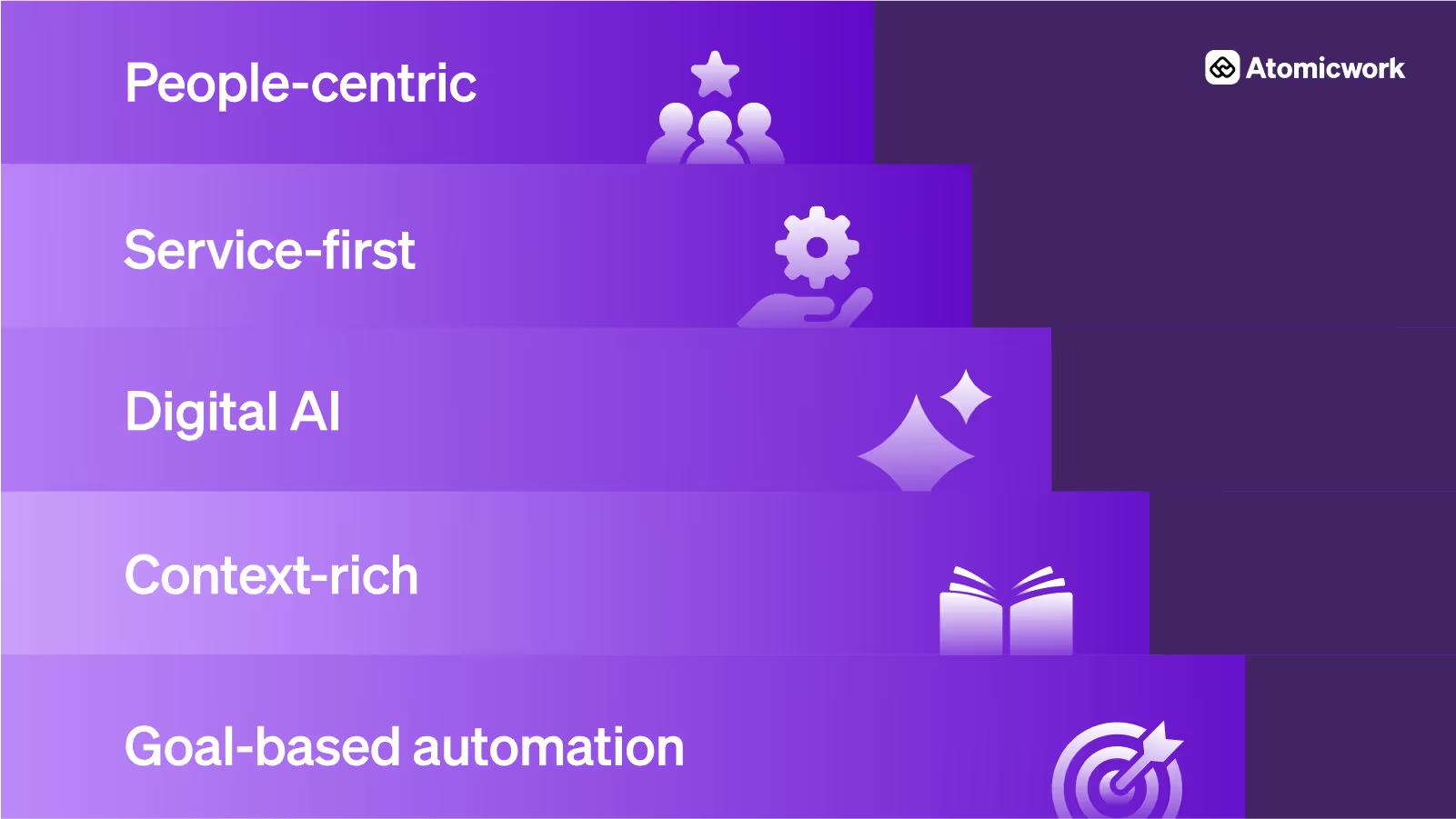
1. People-centric intelligence
Agentic ITSM helps you meet employees where they are - in Slack, Teams, email, or their browser with context. It learns user preferences and adapts to individual communication styles, becoming invisible assistants that anticipate needs rather than barriers that slow people down.
If a user's laptop is approaching storage limits, then agentic AI can proactively create space or suggest alternatives, all before the user experiences any disruption.
2. Service-first resolution
Instead of creating tickets, agentic ITSM focuses on resolving issues in-channel without delay. You can solve problems without ever generating a ticket, escalate intelligently when needed, and provide real-time updates without requiring portal navigation.
When an employee can't access a critical application, agentic AI assesses the situation, checks system status, reviews user permissions, and might resolve the issue instantly or escalate intelligently based on complexity.
3. Context-rich understanding
Agentic AI captures user, system, knowledge, and conversation context automatically to learn from every interaction, building organizational knowledge that improves over time - no constant reconfiguration required.
For instance, with Agentic ITSM you can understand that onboarding a software engineer is different from onboarding a sales rep. They adapt their approach based on role, department, location, and dozens of other contextual factors - without requiring separate workflow configurations.
4. Goal-based adaptation
This is where the magic happens. Agentic ITSM understands objectives, not just procedures. When one path fails, agentic AI helps find alternatives. When business processes change, you can adapt without requiring workflow redesign.
Let’s say one of your approval systems is modified or down, agentic ITSM allows you to route through backup channels or adjust timing automatically.
5. Digital AI foundation
Built for chat, voice, and vision AI, agentic ITSM enables users to speak, show, or share. Conversations are enriched with metadata for quick resolutions. This is AI-native, not AI-bolted-on.
The result? Reduced friction for end-users, offloaded work from service teams, and accelerated business growth.
Our vision for the future of IT
We're building with a people-first approach, service-first mindset, context-driven strategy, and goal-based automations instead of rule-based workflows. Our mission is to help you harness the power of digital AI to supercharge your business instead of being held back by Analog AI.
The future of IT service management is here, and it's time to embrace it. Talk to us if you're keen on unlocking tomorrow's IT, today.
Frequently asked questions

Faq answer paragraph

Faq answer paragraph

Faq answer paragraph

Faq answer paragraph

Faq answer paragraph

Faq answer paragraph

Faq answer paragraph

Faq answer paragraph

Faq answer paragraph

Faq answer paragraph
You may also like...

